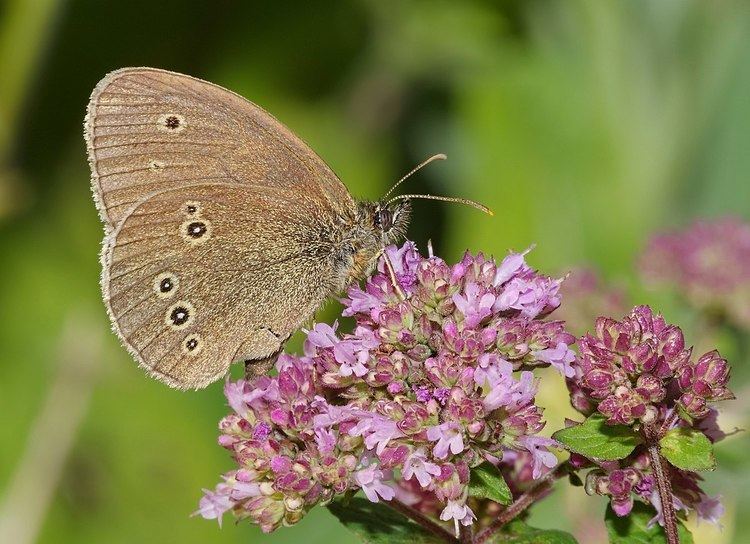 | ||
Note that information on this species applies to Western Europe and some details may not be consistent with the species in other parts of its range.
Contents
- Range
- Description
- Subspecies
- Habitat
- Flight Time
- Food of the larva
- Development and Biology
- Etymology
- References
The Ringlet (Aphantopus hyperantus) is a butterfly in the family Nymphalidae. It is only one of the numerous "ringlet" butterflies in the tribe Satyrini.
Range
The Ringlet Aphantopus hyperantus is a widely distributed species found throughout much of the Palearctic ecozone.In Europe it is common in most countries but absent from northern Scandinavia, peninsular Italy (found in North Italy), Portugal, Southern and central Spain (found in Cantabrian Mountains and the eastern Pyrenees), the Mediterranean islands and North Africa.In Greece it is found in Northern regions (Macedonia, Thessaly ) Beyond Europe it is found across much of temperate Asia including Russia, Siberia, Mongolia, China and Korea.
Description
Aphantopus hyperantus is a medium-sized butterfly with a wingspan of up to 35 to 42 millimeters. The wing upper and lower sides are solid brown with small, yellowish-rimmed eye-spots. The newly emerged ringlet has a velvety appearance and is almost black, with a white fringe to the wings. The number and size of the eye spots is variable, they may be missing on the upper wing surface. In central Europe and southern England the rare form arete occurs. The eggs are pale yellow when first laid, but become pale brown.
The caterpillars are about 25 millimeters long. They are grey or light reddish brown and have dark, reddish brown and very fine dots.Dorsally there is a dark longitudinal line, which is widened at the segment boundaries. Toward the rear, this line is more intensely colored. The head is darker and has several faint longitudinal stripes.
Subspecies
Status uncertain.
Habitat
They live in grassy, moist or dry forest clearings with bushes but not in open places. There is a strong degree of attachment to woodland edges and blackberry bushes. The insect can also be very common where there are creeping thistles (Cirsium arvense) or swamp thistles (Cirsium palustre), oregano (Origanum vulgare), Forest scabious (Knautia sylvatica), or hogweed (Heracleum sphondylium) which are favourite foodplants of the imagos. The males fly in search of newly hatched females in slow, uninterrupted flight and flutter round, about and between grass stems.
Flight Time
The imagos fly in one generation from mid June to late August.
Food of the larva
The caterpillars feed on many grasses.Among the food plants are:
Development and Biology
The female scatters non-adhesive eggs in a slow low flight over grasslands. The larva is nocturnal.There are 4 moults. The larva hibernates while in the 3rd instar, breaking diapause to feed on warm winter evenings during the winter. Feeding resumes in the spring. The pupa stands generally upright in a flimsy silk cocoon, at the base of a grass tussock.This stage lasts for 2 weeks.A. hyperantus is generally considered to have a closed population structure since it occurring in small, well-defined populations
Etymology
hyperantus is Greek hyper means beyond, over, above. anthos means flower. Also husband of one of the Daughters of Danaus
